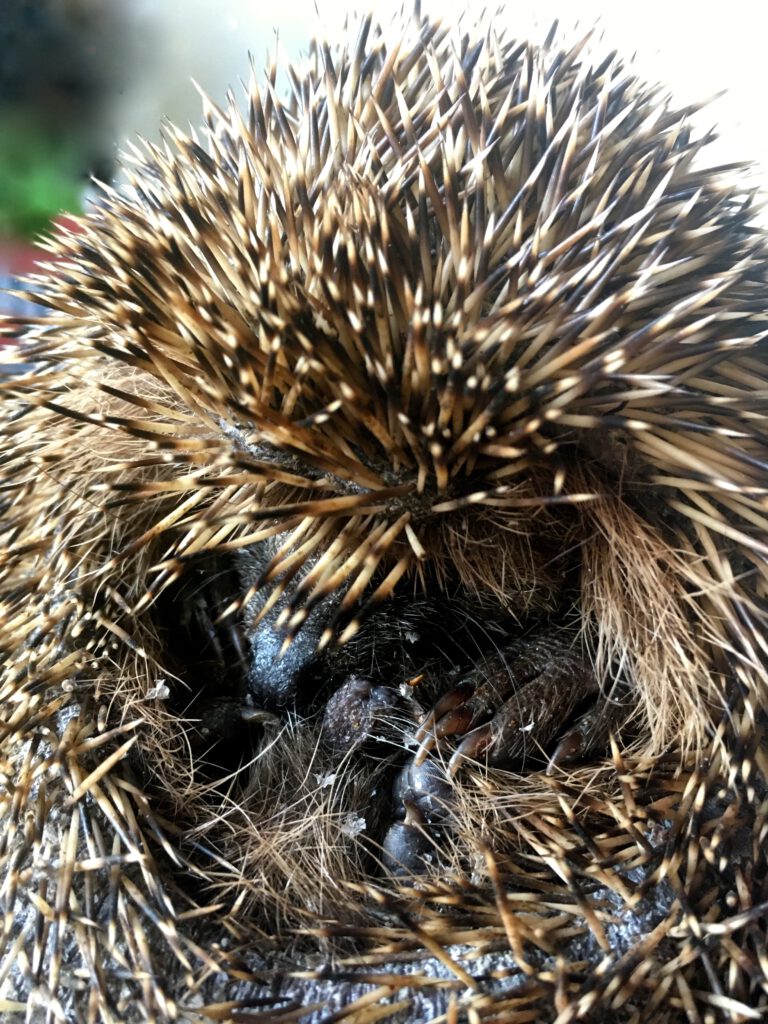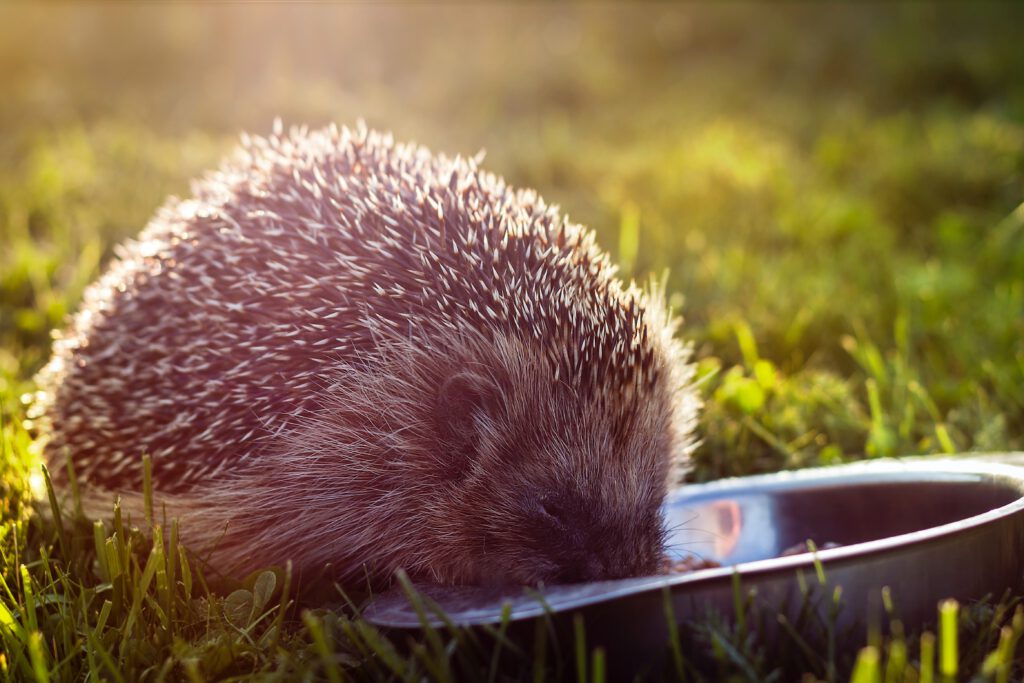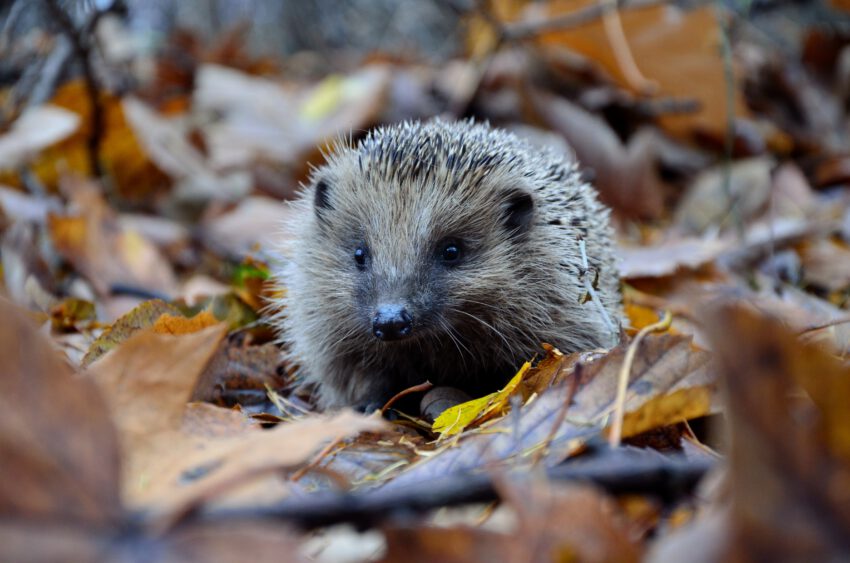Tomorrow, 02.02. is Hedgehog Day!
So lets celebrate and make life nicer for them.
What About Hedgehogs?
Hedgehogs are small mammals with short little legs, cute, wet noses, beady eyes, tiny little sharp teeth, and a back covered in spines which they can curl up into for protection, kind of like a draw string bag. There are 17 different species that naturally occur in Europe, Africa and Asia. They are cute because they come out at dusk, sniffing loudly and rummaging through fallen leaves. If you have one in your garden, you will know, just by the amount of noise they make. They don’t care, they are quite confident carrying their little prickly protection on their back.

This Is Eddie the Igel (Igel = German for hedgehog, pronounced “eagle”). He was a juvenile we found under my parents’ woodpile because he was coughing often and loudly. We took him to the vet who found he had come out of hibernation a little too underweight and he had lung worms. A condition many European hedgehogs have, and can deal with easily, if they are otherwise fit and healthy. So Eddie stayed with me for a while to fatten up, get rid of other parasites and get a few shots to help boost his system.
Why Would You Want One In Your Garden?
Well, first of all, they are super cute and it is a delight to get to watch them going about their business. It’s like having a pet you don’t have to take care of but still get the happiness that comes with watching quirky critters.
Secondly, they are good natural pest control. They will take care of your slugs, snails and bugs for you. No poison needed.
Thirdly, creating suitable habitat makes you a conservation hero, as some hedgehog populations are declining, especially in areas where people live. And making your garden hedgehog friendly, automatically makes it nicer for a bunch of other small wildlife species.
How You Can Make Your Garden Suitable For Hedgehogs:
- Do not use poison to get rid of pests. Poisoned slugs that are eaten by ANY other animal, are poison to these too. Instead, use natural remedies (I will blog advice on this soon!). Slugs can be caught with beer traps: Bury containers in the ground so that the opening is level with the ground and fill them with beer. Slugs are attracted to the smell and drown. You can also protect your veggie patch by putting copper wire or -band around the patch, slugs are unable to cross copper.
- Make your fences permeable for hedgehogs. They don’t climb and move close to the ground. If you have a wall around your garden, only birds can get in and out. With a fence with wide spacing, or that doesn’t touch the ground, a hedgehog can get though to you. Some people have also made “tunnels” through their garden walls, using pipes. These pipes should be at least ø15cm to make sure nobody gets stuck (cats can also get stuck and then your neighbour might be upset).
- Leave the garden a bit messy. All the messy undergrowth and fallen leaves you do not rake up, make your garden more attractive to many different wildlife species.
- Make a shelter. A hedgehog will be attracted to your compost, your woodpile and any accumulation of stuff that may also have an insulating effect. You can help by making a shelter for small animals in a quiet corner of the garden. You can even build him a little house and fill it with leaves, although I wouldn’t go through the trouble of carpentry endeavors until you have actually seen a hedgehog in your garden.
- You can leave a saucer with water out on the ground where it is accessible to the short-legged. Or, for a more aesthetic option, use a shallow water feature like a concave stone that catches rainwater. Birds, bees and butterflies will also thank you.

Can I Feed My Resident Hedgehog?
If you take pleasure from having a hedgehog living with you, like a pet without the liability, you might want to feed it. That is ok, as long as you stick to the hedgehog’s natural diet: For the largest part, hedgehogs are insectivorous, eating anything in the realm of creepy-crawly and/or wiggly-slimy: Bugs, snails, slugs and worms, but also frogs and small snakes, eggs, carrion and even mushrooms, and some fruit. You could try offering them cat food, (dead) fish bait, insectivorous bird food, freeze dried meal worms, berries or some water melon. Do not give them milk. It gives them (and cats too, by the way) stomach ache. Water is just fine thanks.
Whatever you choose, be aware that hedgehogs are nocturnal and can be quite noisy when they eat. Also, they are little piggies and could make a little mess. If you don’t clean up after them the next day, you might attract rats, or your neighbour’s cat to your yard. And she might get stuck in the wall…
**Title Image by by Piotr Łaskawski; Hedgehog eating from a dish by Hans-Olof Andersson

